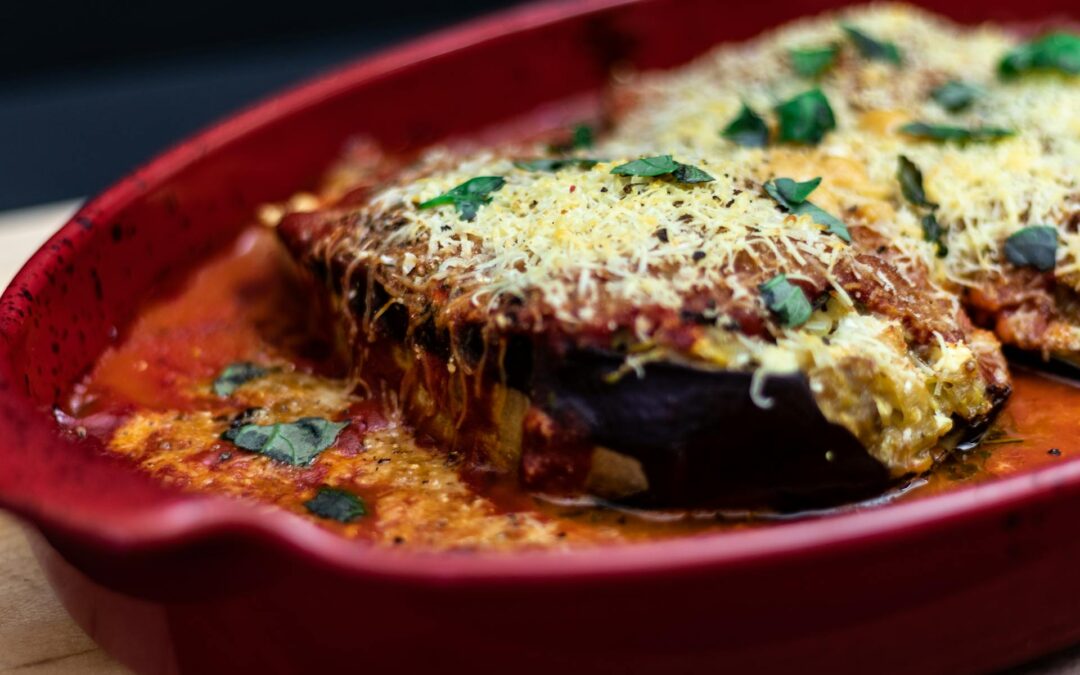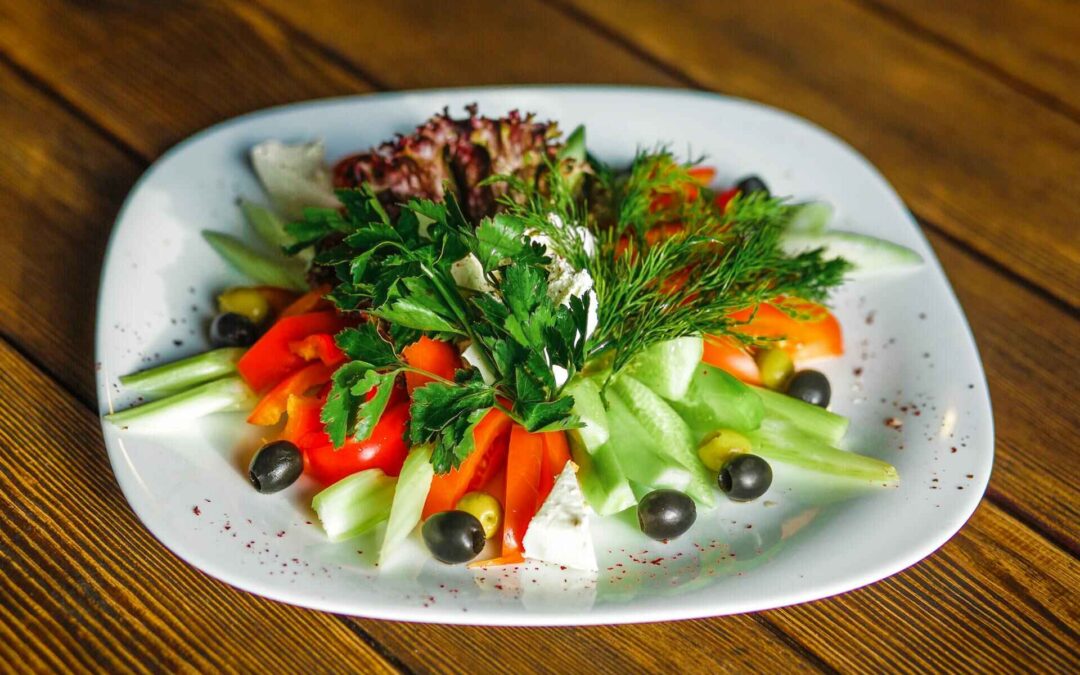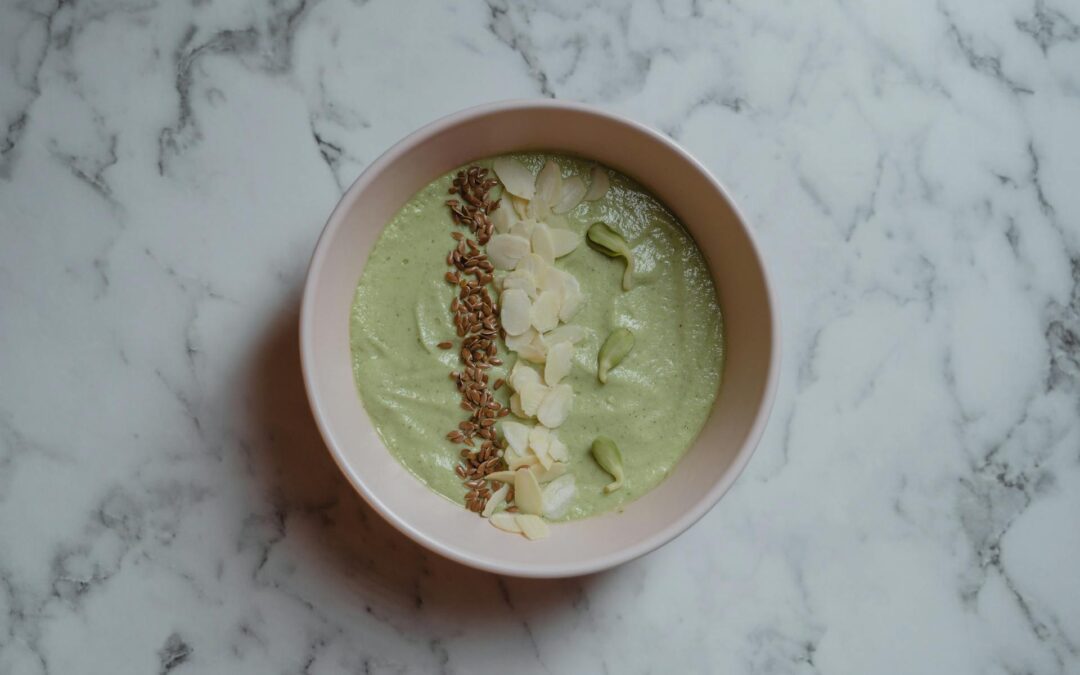Sticking to a vegetarian keto diet can feel like navigating a maze, but snacks make it easier and more enjoyable. These quick bites help you stay in ketosis and ensure you’re getting enough nutrients to keep your energy levels high. Let’s dive into everything you need to know about the best vegetarian keto snack options.
Understanding the Vegetarian Keto Diet
The vegetarian keto diet is a fusion of two distinct eating approaches: the high-fat, low-carb principles of keto and the plant-based philosophy of vegetarianism. While it might seem challenging to merge these two lifestyles, it’s entirely doable with careful planning. Let’s break down the essentials to help you thrive on this diet. (1)
What is the Ketogenic Diet?
The ketogenic diet is designed to induce ketosis, a metabolic state where the body burns fat for fuel instead of carbohydrates. It emphasizes:
- High fat (70–75% of daily intake): Foods like avocado, nuts, and olive oil.
- Moderate protein (20–25%): Ideally from sources like eggs, tofu, and cheese.
- Very low carbs (5–10%): Typically below 50 grams per day.
By reducing carbohydrate intake, the body depletes glycogen stores and shifts to burning fat for energy, producing ketones as an alternative fuel source.
The Vegetarian Approach
A vegetarian diet excludes meat and fish but includes plant-based foods, dairy, and eggs (if following lacto-ovo vegetarianism). Combining this with keto requires replacing meat-based fats and proteins with plant-based alternatives.
Key features include:
- Healthy fats: Coconut oil, nut butter, and ghee.
- Plant-based proteins: Tempeh, seitan, and Greek yogurt.
- Low-carb veggies: Zucchini, cauliflower, and leafy greens.
Challenges of the Vegetarian Keto Diet
Adopting this hybrid approach comes with a few hurdles:
- Protein sourcing: Without meat, finding complete proteins can be tricky.
- Solution: Combine foods like tofu with nuts or seeds to form a complete amino acid profile.
- Nutrient deficiencies: Watch for shortages in iron, zinc, omega-3s, and B12.
- Solution: Use fortified foods or supplements.
- Avoiding hidden carbs: Many vegetarian staples like legumes and grains are too high in carbs for keto.
How to Succeed on the Vegetarian Keto Diet
- Meal Prep: Plan meals and snacks to ensure proper macro distribution.
- Track Macros: Use apps or tools to monitor your intake of fats, proteins, and carbs.
- Choose Smart Substitutes: Replace carb-heavy foods with keto-friendly alternatives like:
- Cauliflower rice instead of traditional rice.
- Zoodles (zucchini noodles) in place of pasta.
Foods to Focus On
Low-Carb Vegetables
- Spinach, kale, broccoli, asparagus.
Healthy Fats
- Avocado, nuts, seeds, coconut products.
Protein Sources
- Eggs, cheese, tofu, tempeh.
Keto Dairy
- Full-fat cheese, heavy cream, Greek yogurt.
Key Ingredients for Vegetarian Keto Snacks
Building tasty and satisfying vegetarian keto snacks starts with smart ingredient choices. These ingredients are not only keto-friendly but also help you meet your daily nutritional goals while sticking to a plant-based diet. Let’s dive into the essentials you’ll need to create a wide variety of snacks that are both low-carb and packed with healthy fats. (2)
Low-Carb Vegetables
Low-carb vegetables are the foundation of many vegetarian keto snacks. They’re nutrient-dense, versatile, and low in net carbs.
- Spinach and Kale: Use for wraps, dips, or as a base for vegetable crisps.
- Zucchini: Perfect for making chips, fritters, or even a base for pizzas.
- Cauliflower: A keto superstar for making low-carb hummus, rice, or even “tater tots.”
- Bell Peppers: Sweet, crunchy, and great for stuffing with cream cheese or guacamole.
- Cucumber: Slice into rounds for dipping or as a base for mini sandwiches.
Healthy Fats
Healthy fats are the backbone of the ketogenic diet and essential for creating satisfying snacks that keep you full.
- Avocado: Mash for guacamole, slice for salads, or use as a topping for crackers or veggie rounds.
- Nuts and Seeds: Almonds, walnuts, macadamia nuts, and chia seeds are perfect for snacking or adding to recipes.
- Nut Butter: Opt for unsweetened almonds, macadamia, or peanut butter for a quick energy boost.
- Coconut Oil and Coconut Butter: Use for fat bombs, smoothies, or as a cooking base for roasted vegetables.
- Olives and Olive Oil: Great for grazing or incorporating into dips and dressings.
Protein Sources
Protein is key for maintaining muscle and overall health on a vegetarian keto diet. While avoiding meat, you’ll need plant-based and dairy-based sources to keep your snacks protein-rich. (3)
- Eggs: Hard-boiled eggs are a classic snack, but you can also use them in mini frittatas or deviled egg recipes.
- Tofu and Tempeh: Marinate and bake them as crispy bites or use them as a filling for lettuce wraps.
- Edamame: High in protein and easy to prepare with just a sprinkle of salt or seasoning.
- Protein Powders: Opt for plant-based, keto-friendly powders to make smoothies or protein bars.
Keto-Friendly Dairy
Dairy is a versatile ingredient for keto snacks, adding creaminess, flavor, and essential fats.
- Cheese: String cheese, cheddar crisps, or brie slices are great on their own or paired with low-carb vegetables.
- Cream Cheese: Use as a filling for celery, and bell peppers, or as a dip for veggie sticks.
- Greek Yogurt (Full-Fat): Pair with keto-friendly sweeteners and berries for a quick snack.
- Heavy Cream: Perfect for whipping into keto desserts or adding richness to dips and spreads.
Flavor Enhancers and Add-ons
To keep your vegetarian keto snacks exciting, don’t forget these low-carb ingredients that add flavor, texture, and variety.
- Keto-Friendly Sweeteners: Use monk fruit, erythritol, or stevia to sweeten desserts and drinks.
- Cocoa Powder: Unsweetened cocoa is perfect for making fat bombs, brownies, or chocolate pudding.
- Herbs and Spices: Basil, oregano, garlic powder, paprika, and chili flakes can elevate the flavor of any snack.
- Tahini and Nut-Based Sauces: Ideal for dips, dressings, or spreading on low-carb breads.
Snacking Essentials
While the above ingredients form the foundation, you can also stock up on prepared items to simplify your snack-making:
- Seaweed Snacks: Crunchy, salty, and naturally low-carb.
- Pork Rinds (Vegetarian Options): Mushroom or cheese-based alternatives for crunch.
- Low-Carb Crackers: Almond or flaxseed crackers pair wonderfully with spreads.
Tips for Using These Ingredients
- Batch Prep: Make snacks like fat bombs, egg muffins, and veggie chips in advance to save time during busy weeks.
- Balance Macros: Combine vegetables with fats and proteins to create snacks that are filling and nutrient-dense.
- Experiment: Try new combinations like cucumber rounds topped with guacamole or zucchini slices baked with cheese.
The right mix of ingredients will ensure your vegetarian keto snacks are as satisfying as they are healthy. With these essentials, the possibilities are endless, from savory crisps to creamy dips and sweet treats—all while keeping your carb count in check.
Snack Categories and Examples
Finding the perfect snack on a vegetarian keto diet is all about balancing creativity with simplicity. Whether you’re craving something sweet, or salty, or just need a quick bite, there’s a snack for every mood. Below, we’ll explore key snack categories and give detailed examples to inspire your next keto-friendly treat. (4)
1. Salty Snacks
Salty snacks are the go-to for satisfying cravings without breaking your carb budget. They often rely on healthy fats and low-carb ingredients to deliver maximum flavor.
Examples:
- Kale Chips: Lightly coat kale leaves with olive oil and sprinkle with salt, garlic powder, or chili flakes before baking until crispy.
- Cheese Crisps: Melt shredded cheddar or Parmesan in small mounds on parchment paper and bake for crispy, crunchy rounds.
- Spiced Nuts: Toss almonds or walnuts with coconut oil, paprika, and a pinch of salt, then roast until golden.
2. Sweet Snacks
Sweet cravings can be tricky on a keto diet, but there are plenty of options using low-carb sweeteners and natural ingredients. (5)
Examples:
- Chocolate Fat Bombs: Mix coconut oil, unsweetened cocoa powder, and a touch of erythritol. Pour into molds and freeze for a decadent treat.
- Chia Seed Pudding: Combine chia seeds with unsweetened almond milk, vanilla extract, and stevia, then let it sit overnight for a creamy dessert.
- Berry Yogurt Cups: Layer full-fat Greek yogurt with a handful of raspberries or blueberries and a sprinkle of chopped nuts.
3. Quick & Easy Snacks
Perfect for when you’re short on time, these snacks require minimal prep and are easy to grab on the go.
Examples:
- Avocado Halves: Sprinkle with sea salt, drizzle with olive oil, and add a pinch of chili flakes for an instant keto snack.
- Cucumber Slices with Cream Cheese: Spread cream cheese on thick cucumber rounds and top with fresh dill or smoked paprika.
- Olive Medley: Enjoy a mix of black and green olives for a salty, low-carb pick-me-up.
4. Make-Ahead Snacks
For busy days, having snacks prepped and ready to eat can be a lifesaver. These options store well and retain their flavor over time.
Examples:
- Mini Egg Muffins: Whisk eggs with spinach, cheese, and chopped peppers, then bake in muffin tins for protein-packed bites.
- Zucchini Fritters: Grate zucchini, mix with egg and Parmesan, then pan-fry until golden.
- Low-Carb Trail Mix: Combine nuts, seeds, and unsweetened coconut flakes for a portable snack.
5. High-Fat Snacks
High-fat snacks are essential on a keto diet to meet your macronutrient needs while keeping you full for longer.
Examples:
- Stuffed Avocado: Scoop out a bit of the flesh and fill the cavity with guacamole or a dollop of sour cream.
- Coconut Fat Bombs: Blend coconut butter with unsweetened shredded coconut, freeze into balls, and enjoy.
- Macadamia Nuts: Naturally rich in fats and low in carbs, these are perfect for snacking anytime.
6. Protein-Rich Snacks
For vegetarians, protein-rich snacks are vital to maintaining energy levels and muscle health.
Examples:
- Tofu Cubes: Marinate tofu in soy sauce and sesame oil, then air-fry or bake until crispy.
- Hard-boiled eggs: Sprinkle with salt, pepper, and a dash of paprika for added flavor.
- Edamame: Steam and sprinkle with sea salt or chili powder for a simple snack.
7. Dippable Snacks
Dips and spreads add excitement to simple snacks while keeping them low-carb.
Examples:
- Cauliflower Hummus: Replace chickpeas with steamed cauliflower blended with tahini, garlic, and olive oil.
- Spinach Artichoke Dip: Combine cream cheese, spinach, and artichokes, then bake for a rich, savory dip.
- Guacamole with Veggie Sticks: Serve with celery, zucchini sticks, or bell pepper strips for scooping.
8. Store-Bought Snack Ideas
Sometimes, convenience is key. Look for these keto-friendly vegetarian snacks at your local store:
- Seaweed snacks
- Low-carb cheese sticks
- Nut and seed bars with no added sugars
Pro Tips for Creating Perfect Snacks
- Balance Flavors: Combine salty and creamy elements, such as cheese and olives, for a satisfying mix.
- Prep in Batches: Make a week’s worth of snacks in advance to avoid the temptation of carb-heavy options.
- Experiment: Don’t be afraid to mix and match ingredients like cream cheese with hot sauce or nuts with dark chocolate.
By exploring these snack categories and examples, you’ll have a treasure trove of vegetarian keto snack options to keep your diet exciting and delicious. Whether you crave sweet, salty, or savory, there’s a low-carb snack for every moment!
Tips for Preparing and Storing Snacks
When it comes to vegetarian keto snacks, preparation and storage are key to ensuring that you always have healthy options on hand. By organizing your ingredients, optimizing your prep process, and understanding the best storage methods, you can maintain a consistent supply of low-carb, nutrient-dense snacks. Here are some practical tips to help you prepare and store your vegetarian keto snacks more efficiently:
Batch Prep for the Week
One of the easiest ways to stay on track with your vegetarian keto diet is to prepare snacks in bulk. Spend a bit of time each week chopping, mixing, and cooking so you have a ready supply of snacks when hunger strikes.
Tip:
- Prepare snack portions in advance: Portion out individual servings of nuts, seeds, or even pre-chopped veggies, so you avoid overeating.
- Pre-make fat bombs or muffins: These snacks are stored well in the fridge or freezer, so having them prepped in advance means you’re never left scrambling for a quick snack.
Keep Snacks Fresh with Proper Storage Containers
To keep snacks fresh for longer, it’s crucial to store them in airtight containers. The right container will help maintain texture and flavor, preventing your snacks from going stale or soggy.
Tip:
- Glass containers with tight lids: These work best for snacks like cheese crisps, muffins, or dips.
- Silicone bags or pouches: Ideal for snacks that need to stay crisp, like kale chips or roasted nuts.
- Mason jars: Perfect for layered snacks like chia pudding or prepped veggies.
Freezing Snacks for Longevity
Certain vegetarian keto snacks are perfect for freezing, especially those that need to be portioned out for later use. Many keto-friendly snacks, like fat bombs or muffin-sized dishes, freeze well without losing their texture or flavor.
Tip:
- Fat bombs and cheese-based snacks can be easily frozen in molds and stored in freezer bags.
- Baked goods like zucchini fritters or keto muffins should be placed on a baking sheet before freezing, so they don’t stick together. Once frozen, transfer them to a freezer-safe bag or container.
Use Labels to Track Freshness
Labeling your stored snacks can help you keep track of their freshness and avoid the confusion of forgetting when they were made. This is especially important if you’re preparing a variety of snacks in large batches.
Tip:
- Use masking tape or sticky notes to jot down the date you prepared the snacks.
- Label what the snack is, so you can quickly grab your favorite snack without second-guessing.
Portion Control for Easy Access
Snacking on a vegetarian keto diet requires portion control, especially when you’re dealing with calorie-dense ingredients like nuts or seeds. Preparing snacks in individual portions can prevent overeating and help you stay within your daily carb limits.
Tip:
- Use snack-sized containers or bags: Fill small, portable bags with your favorite nuts or cheese cubes for an on-the-go option.
- Use a food scale: Measure servings if you want to stick closely to your keto macronutrient targets.
Use Insulated Containers for On-the-Go Snacks
If you need snacks that will stay fresh while you’re out and about, insulated containers are an excellent investment. These containers help maintain the right temperature and ensure that your snacks are just as tasty when you’re ready to eat.
Tip:
- Ideal for dips and chilled snacks: If you’re carrying things like guacamole, spinach dip, or pre-sliced veggies, an insulated container will keep them cool.
- Mini coolers or lunch boxes: Pack these with your keto-friendly snacks when you head to work or run errands.
Choose Snacks That Are Easy to Pack
When you’re short on time or need to take your snacks on the road, simplicity is key. Opt for snacks that don’t require refrigeration or complicated packaging.
Tip:
- Nuts and seeds: These are naturally portable and don’t require any prep or refrigeration.
- Cheese sticks or slices: Pre-packaged or homemade cheese is perfect for quick snacking without needing to be kept cold for several hours.
Keep Snacks at the Right Temperature
Some keto snacks, especially those with dairy or fresh produce, should be kept at the right temperature to avoid spoilage. Use cooling packs or insulated bags for snacks that need refrigeration while traveling.
Tip:
- If you’re storing snacks that are high in protein (like eggs or tofu), always keep them in the fridge until you’re ready to eat.
- If you prep things like spinach and cheese muffins, keep them in the fridge and consume them within a few days to maintain freshness.
Diversify Your Snacks
To avoid boredom, it’s important to keep your vegetarian keto snacks interesting. Stock up on a variety of ingredients and switch up your snack options regularly. Different textures and flavors will keep you excited about your diet and make it easier to stick to.
Tip:
- Experiment with spices, herbs, and flavor combinations. Add things like turmeric, paprika, or chili powder to spice up your nuts or roasted veggies.
- Rotate your snack options each week to keep your meals fresh and appealing.
Maintain Clean and Organized Storage Areas
Proper storage doesn’t just involve containers—it also requires a well-organized space. Keep your snacks organized by categorizing them (e.g., savory, sweet, protein-packed, or high-fat) so you can quickly grab what you need.
Tip:
- Use clear containers or labeled bins for easy identification of snack types.
- Store perishable snacks like cheese or veggie sticks at the front of the fridge, and non-perishables like nuts in a pantry or cupboard.
Benefits of Snacking on a Vegetarian Keto Diet
The vegetarian keto diet offers unique health benefits, and incorporating well-planned snacks into your routine can amplify these advantages. Snacking isn’t just about satisfying hunger; it’s an opportunity to enhance your nutritional intake and maintain energy levels while staying within the framework of this low-carb, plant-based eating style. Below, we explore the key benefits of snacking on a vegetarian keto diet.
Helps Maintain Blood Sugar Levels
One of the hallmark benefits of the keto diet is its ability to stabilize blood sugar levels by reducing carbohydrate intake. Well-balanced vegetarian keto snacks—like fat bombs or chia seed pudding—help maintain consistent energy throughout the day.
Why It Matters:
- Prevents energy crashes: Regular snacking keeps your blood sugar steady, reducing fatigue and enhancing focus.
- Supports insulin sensitivity: Consuming high-fat, low-carb snacks encourages the body to use fat as its primary energy source, improving metabolic health.
Keeps Hunger Under Control
Snacking plays a crucial role in curbing hunger and preventing overeating during meals. The high-fat content in vegetarian keto snacks is especially satiating, ensuring you feel full for longer.
Example Snacks:
- Almond butter on celery sticks
- Hard-boiled eggs with avocado slices
Why It Matters:
- By staving off hunger, you’re less likely to indulge in high-carb foods that can derail your progress.
- Healthy snacking can eliminate the need for unhealthy, processed options.
Boosts Nutritional Intake
Snacking on a vegetarian keto diet is an excellent way to pack in extra nutrients that may otherwise be missing from your meals. With thoughtful planning, snacks can provide essential vitamins, minerals, and antioxidants.
Nutrient-Dense Options:
- Kale chips for iron and vitamin K
- Chia seed pudding for omega-3s and calcium
Why It Matters:
- A variety of snacks ensures a balanced intake of nutrients, supporting overall health.
- Nutrient-rich foods also contribute to skin health, improved immunity, and better digestion.
Promotes Weight Management
Many people turn to the keto diet for weight management, and snacking smartly can support this goal. By keeping your metabolism active with small, high-fat snacks, you can avoid large spikes in hunger and overeating.
Weight-Friendly Snacks:
- Zucchini fritters baked in coconut oil
- Cheese crisps with guacamole
Why It Matters:
- Frequent snacking ensures you’re not tempted by calorie-dense, high-carb foods.
- By sticking to portion-controlled snacks, you maintain calorie balance while staying full.
Supports Brain Function
The keto diet is known for its brain-boosting benefits, thanks to the use of ketones as a fuel source. Snacks rich in healthy fats, like avocados and nuts, provide a steady supply of energy to the brain.
Brain-Fueling Snacks:
- Avocado chocolate mousse
- Walnuts or macadamia nuts
Why It Matters:
- Enhanced mental clarity and focus throughout the day.
- Reduces the risk of cognitive decline over time.
Improves Digestive Health
Plant-based keto snacks often include fiber-rich ingredients like leafy greens, chia seeds, and nuts, which support digestive health.
Digestive-Friendly Snacks:
- Cauliflower hummus with cucumber slices
- Chia seed pudding with coconut milk
Why It Matters:
- Fiber helps prevent constipation, a common concern with keto diets.
- Balanced snacks promote a healthy gut microbiome, essential for overall health.
Provides Convenient Energy for Active Lifestyles
If you lead an active lifestyle or exercise regularly, snacks can help replenish energy levels and aid recovery. Vegetarian keto snacks with a good balance of fats and proteins are perfect for pre-or post-workout nutrition.
Energy-Boosting Snacks:
- Protein-packed spinach and cheese muffins
- Coconut fat bombs
Why It Matters:
- Provides sustained energy without the carb-heavy crash.
- Supports muscle recovery and growth with plant-based proteins.
Encourages Creativity in the Kitchen
Snacking can inspire creativity, pushing you to experiment with ingredients and flavors. From baking keto-friendly muffins to crafting new dips and spreads, snack preparation can be a fun, culinary adventure.
Creative Snack Ideas:
- DIY nut butter blends with spices
- Roasted spiced nuts or seeds
Why It Matters:
- Keeps your diet interesting, reducing monotony and improving adherence.
- Allows you to discover new recipes and expand your keto-friendly repertoire.
Perfect for Socializing
Having a variety of vegetarian keto snacks on hand is ideal for gatherings and social events. These snacks cater to different dietary preferences while ensuring you stay on track with your goals.
Snack Ideas for Sharing:
- Crispy cheese chips with guacamole
- Veggie platters with keto-friendly dips
Why It Matters:
- Helps you maintain your diet even during parties or celebrations.
- Introduces others to the delicious possibilities of the keto lifestyle.
Reduces the Risk of Cheat Days
Having a stockpile of prepared vegetarian keto snacks reduces the temptation to reach for carb-heavy, processed foods during moments of weakness. With satisfying snacks readily available, you’re more likely to stick to your dietary goals.
Why It Matters:
- Ensures long-term success by minimizing diet disruptions.
- Promotes consistency, which is key to achieving results on a keto plan.
FAQs
Can I eat fruits on a vegetarian keto diet?
Yes, but stick to low-carb fruits like berries.
What are dairy-free vegetarian keto snacks?
Try avocado with olive oil or almond butter on celery sticks.
How do I ensure I stay in ketosis with snacks?
Monitor your carb intake and prioritize fats and proteins.
Are there store-bought vegetarian keto snacks?
Look for options like seaweed sheets or nut bars with no added sugar.
Can I have smoothies on a vegetarian keto diet?
Yes! Blend unsweetened almond milk, spinach, avocado, and a touch of stevia.
The Bottom Line
Exploring vegetarian keto snack options opens the door to a variety of delicious, nutritious, and easy-to-prepare treats that perfectly align with your dietary goals. By incorporating wholesome, low-carb ingredients like nuts, seeds, avocados, and cheese, you can enjoy satisfying snacks that fuel your body and mind without compromising your commitment to the vegetarian keto lifestyle.
With thoughtful preparation, proper storage, and a touch of creativity, snacking becomes a powerful tool to support your health journey. Whether you’re curbing hunger, maintaining steady energy levels, or simply indulging in a guilt-free treat, these snacks are versatile, convenient, and packed with benefits. By following the tips and recipes shared in this guide, you’ll not only simplify your snacking routine but also discover new ways to enjoy the unique flavors and textures of the vegetarian keto diet.
Embrace these snack options, and let them be your companions on the path to sustained health and wellness. With the right balance of preparation and variety, you’ll keep your diet enjoyable, exciting, and successful!







0 Comments